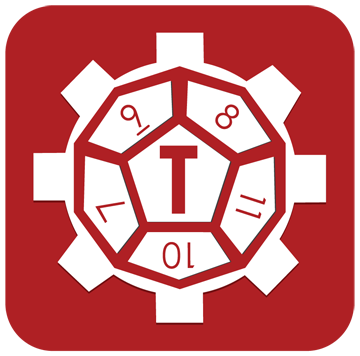A new blog post is available here.Contents Below:The text of Shadows Over Sol is scheduled to be out of editing soon, the Quick-Start is doing well on DriveThruRPG and the open beta test is in its final weeks. It’s time to begin previews of the upcoming science fiction horror RPG in anticipation of its September Kickstarter. We begin with a preview of the game's vision of the future.
The future holds a million wonders and a million horrors. Two centuries from now humankind has spread into space, taking our rivalries and struggles with us. We've conquered diseases, but created others. We've built new electronic networks, but let the old ties atrophy and die. And with each new rise and fall, we keep changing.
Welcome to the Future
Don't try to get up. I've been told you're going to be too weak for that. I'm not a doctor, but take it from me that you have some recovery to go through. Don't worry, I know you're disoriented, but with all that's happened to you that's only to be expected. Physically, you're going to be strapped to this bed for some time, but I'm more concerned about your social recovery.
As I said before: I'm not a doctor. I'm an historian. I've been told that they found you frozen in your ship near one of the Lunar Lagrange points. According to our estimates you've been in cryo almost two hundred years, since the early twenty-first century. It's now the early twenty-third century, and things are very different. They've called me in to help you adjust socially, as I specialize in understanding your era.
No, don't try to talk. Your tongue won't be fully working yet. Just lay back and let me try to fill you in on what you can expect from the brave new world. As I said before, many things have changed, and you're going to have to adapt to them quickly.
The Networked World
We're plugged in, turned on, networked and wired in a way we never were before. From toddlers we tune into a world of instant access and far-ranging communication. We see into the lives of others, we read their blog posts, stalk their friends lists and comment on pictures of their breakfasts. Just this morning I had a conversation in a random-match chat room with a man from Brussels. We talked about education. But he's a Heed and had different views than I.
We may never see our neighbors. We may not even speak the same languages, though they live just a hab cell over. Through the miracle of telepresence, telecommunication and telecommuting technologies, physical location means less than it ever has. I have more in common with people of my subculture in Tokyo than I have with those down the street.
If there's a linchpin of our society it's the Net. It's how we structure our lives, track our friends, jack into the social networks and pass our free time. Some of us spend more of our waking life in simspaces than here in meatspace.
Splintering of the Culture
The thing about the Net, though, is that it's easy to wall yourself off from the things you don't normally seek out. We all hit up our favorite news feeds, follow our favorite subcultural celebrities and cruise our favorite forums, but these are all places we self-select. They're likely to be places that feed back to us our own confirmation biases, and that market to us our own subcultural trappings. This means the media I consume, and the lens through which I obtain information about happenings in the world may be radically different than what my neighbor sees. These sorts of differences divide the culture.
Often the places we visit on the Net are the same sites, or descendants of the same sites, our parents were jacking into in their own youth. Sure, the generation gap may give rise to new forks of the profiles or new subforums, but views and habits tend to pass down through family lines. Over the last couple centuries or so the individual subcultures that people live in have diverged so much that they're becoming non-geographical cultures in their own right.
Language Shift
While nation-states may be on the downslide, languages remain as fractured as ever. However, due to the widespread use of real-time translation software, the language barrier—while still present—is less of a problem than ever before. Almost all Net profiles have translators built in, and most anyone actively doing business across a language barrier usually has translation software running on their hand terminal. While these translations aren't perfect, the software is pretty good at what it does, and as long as a speaker avoids obscure euphemisms or slang, the point usually gets across.
Still, sometimes software or hardware malfunctions, information is lost in translation or one comes across a speaker of a language for which they don't have software installed. In times like these one must fall back to the old-fashioned methods of learning the language.
The ten most common languages today are: English, Mandarin, Wu, Arabic, Spanish, Hindi, Russian, French, Portuguese and Bengali. Many hundreds of others are spoken as well, while many hundreds still have died off in the last two centuries. Generally speaking, today Mandarin is the typical language of trade, while French is used in diplomacy. English is typically used for scientific works, although much scientific terminology is still drawn from Latin.
To make matters more complicated, individual subcultures often have their own dialects of languages. How varied these are differs from subculture to subculture and language to language, but at their most extreme two speakers of the same language from different subcultures can be almost incomprehensible to each other. Automated translation programs still mitigate this somewhat, but subcultural slang is typically handled less well than the more common baseline words of a language.
Continued in the Shadows Over Sol preview next week…
 Tab Creations
Tab Creations